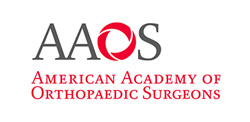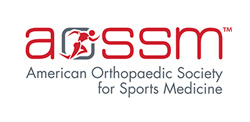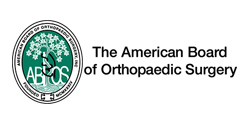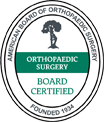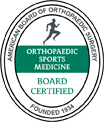
Anterior knee pain, or pain under and around the kneecap, is commonly referred to as patellofemoral pain syndrome. Patellofemoral pain syndrome, or PFPS for short, is one of the most common musculoskeletal problems that will cause people to seek medical treatment. The Journal of Orthopedic and Sports Physical Therapy reported that 2.5 million runners will be diagnosed with PFPS in a year. PFPS is usually not related to one specific injury, but gradually builds with increasing activity. It is usually described as a nagging ache in the knee, or occasionally, a sharp pain. Pain is generally associated with going up and down stairs, running, sitting for a long period of time, or squatting.
The etiology of PFPS is not completely understood, but it is thought to be due to local and non-local factors. Local factors contributing to PFPS are factors that directly deal with the knee joint. They include quadriceps muscle weakness and impairments in the mechanics of how the kneecap moves. Nonlocal factors are issues within the lower extremity that are not directly related to the knee joint. An example of a nonlocal factor about the ankle joint that has been implicated in the development of PFPS includes foot pronation or the arch of your foot flattening out or the inside of your ankle dropping excessively to the floor when walking or running. Hip-related factors contributing to PFPS include movement abnormalities at the hip, usually related to hip weakness, which will cause abnormal joint mechanics about the knee joint.
Physical therapy has proven successful in the treatment of PFPS. A well-rounded rehab program for anterior knee pain must include quadriceps strengthening, but it also must focus on the function of the joint above and below the knee joint. Hip strengthening seems counterintuitive to rehabilitating knee pain, but as noted above, the hip musculature is imperative to the appropriate function of the knee joint. Research also has proven that programs that include hip strengthening in addition to quadricep strengthening are effective at alleviating pain, but also have been proven superior to programs that involve quadricep strengthening alone.
When meeting with your physical therapist at Performance Orthopaedic Surgery & Sports Medicine, we will perform a thorough evaluation. The therapists at POSSM will evaluate your entire lower body to build a holistic rehab plan to target impairments that are contributing to your pain symptoms. We will build a progressive program to include hip and quadricep strengthening, as well as evaluate your ankle and foot posture. As indicated, we will provide exercises to improve the strength and/or range of motion of the ankle or discuss options for inserts and modifications to shoe wear.
Heather Smith, Doctor of Physical Therapy at Performance Orthopaedic Surgery and Sports Medicine, has extensive training in General Orthopaedics, Sports Medicine and post-operative rehabilitation of the upper and lower extremities. She is passionate about helping people feel better, move better and return to their desired level of function.
Amanda Lee, Doctor of Physical Therapy at Performance Orthopaedic Surgery and Sports Medicine, is a native of Chapel Hill and a multi-sport athlete including a semi-pro basketball with the RDU Flames in 2009. Dr. Lee has an earned Doctorate from the Murphy Deming College of Health Sciences in Staunton, VA. She enjoys working with athletes of all ages and is passionate about helping people regain lost function and mobility.




